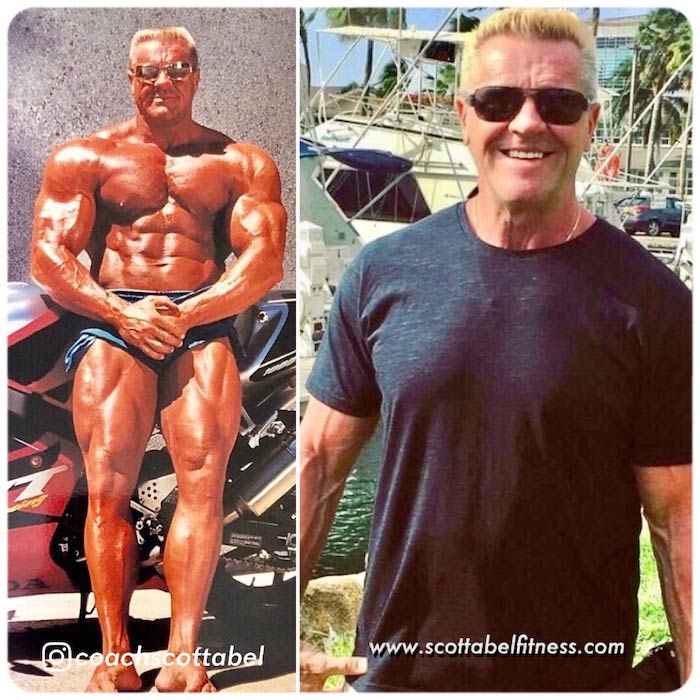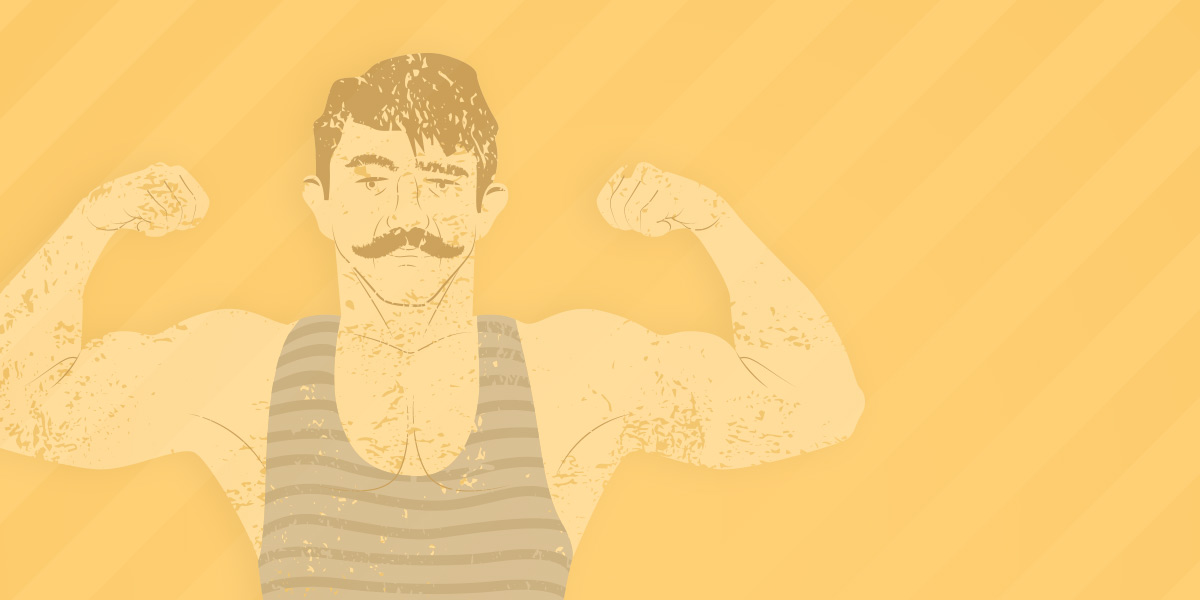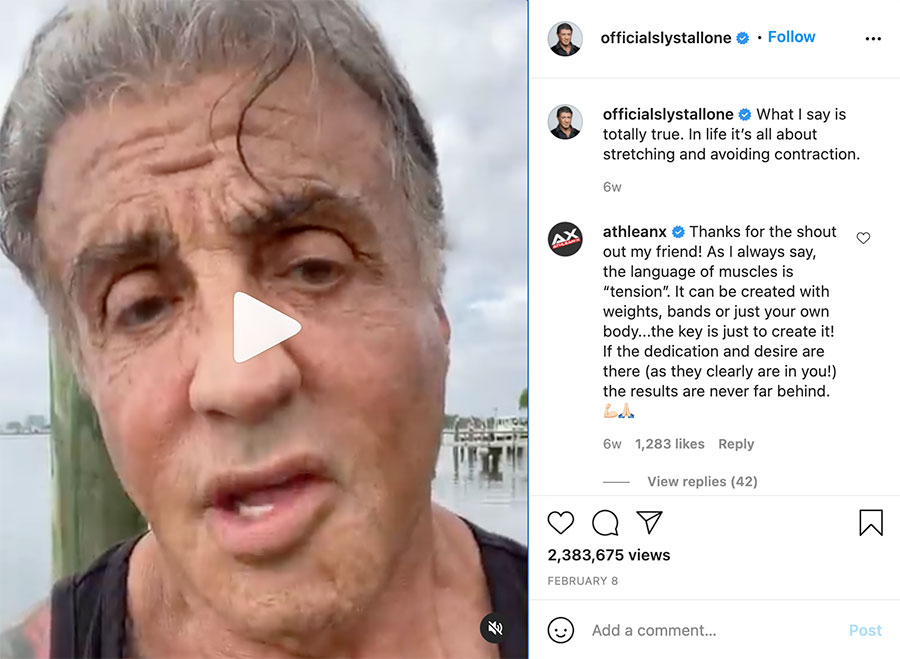A comedian once rightly said, “The older I get, the younger I used to be.” Truer words have never been spoken.
But what does that mean and why is it so apropos?
When I first wrote Physique After 50 and offered the programs within it, it was because of my frustration with the absolutely terrible advice I was witnessing in the fitness industry when it came to exercise and health for aging trainees.
And frankly, not only has this not changed but it seems to have gotten substantially worse.
And speaking not only as a fitness expert with 5 decades of experience behind me, but speaking also as an aging trainee myself, the common advice offered to aging trainees that I see online borders on the absurd, and is certainly less than helpful.
There are far too many ‘youngins’ (experts in their 30’s and 40’s) telling people in their 50’s and 60’s what their bodies will feel like and go through.
But this is one of these scenarios where unless you’ve been there, you can’t possibly know or offer reasonable advice.
Look, I can read and study and know all about scaling Mountain Everest. But until and unless I have done it myself, I cannot offer anyone, any kind of sound advice about how they should attempt that climb, and how they will feel doing it!
Advising aging trainees is kind of the same thing:
When offering so-called ‘expert’ advice on exercise for us seniors, it is ludicrous paradigm blindness to abide only in the principles of exercise physiology and strength building, and not also include the principles of what we know for sure about an aging body as well!
It seems to me like these websites and social media platforms offering training advice for the 60 and over demographic are either promoting ridiculous hardcore stuff with no understanding of the aging body and aging joints, or they are promoting silly 5 lbs pink DB’s with no effort expended at all.
The happy median of course is somewhere in-between – as I wrote about in my Physique After 50 book – machines, resistance bands, DB’s as the preferred resistance training tools along with higher reps execution with lighter loads, with minimum to no ballistic exercises and low to non-impact exercises as well. This above scenario makes the best strategical sense to approach working out as you advance into your late 50’s and beyond.
The reality is aging bodies are changing bodies. The body is different now. It is less resilient. And the wear and tear of youth begin to exert their consequences. And therefore, training for the older trainee must change, both tactically and strategically.
This is true for 90% of trainees, 90% of the time.
Here is an example from my own repertoire. I developed MET training back in 2006-2008, but there is no way in hell that I myself could execute any of those programs now as I come up on 60 yrs. of age.
But thank goodness other well-recognized aging trainees are also coming forward to preach more or less the same logical arguments I have been making about working out as we age past our 50s.
Sylvester Stallone
For instance, Sylvester Stallone, known for his amazing physique in the 80’s has recently commented on training for his own aging body. In this very short clip, here is what he had to say which is absolutely relevant and a testament to the voice of experience.
Sly Stallone: I have quoted highlights I think are important in this 2:00 mins video:
“I used to workout a lot with weights – And the cheque comes due on that – Your joints start to hurt – this, back and knees – it just happens – sometimes getting into that kind of shape can kill ya! – So, I found a new way to workout …… but for me at my age, I found the newest, hardest, toughest, most productive way is bands – training with bands …. Where you can get an entire workout in say 20 mins that is life-changing – it’s different, you don’t get bored …”
(Side Note: You can check out my whole Resistance Bands Exercises Playlist on my YT channel and Resistance Bands Workouts are part of my Flexible Fitness program as well)
Ok, yes, there is some extra hyperbole here in terms of using words ‘toughest’ and ‘life-changing’ and all of that; and if you follow my work you know that a workout is only as effective as the program it is part of. But his points are relevant nonetheless.
He speaks of a certain price to pay for hangin n bangin in our younger years.
And this is something these so-called “experts” seem to gloss over when offering advice to an aging trainee.
Let’s look at this through another relevant lens:
Tiger Woods
Before his horrible automobile accident, Tiger Woods was an example of bad training advice combined with an aggressive competition schedule and attitude.
Here was a sport Phenom, playing a non-contact, non-impact, non-invasive, non-high-intensity sport, and yet he has had 5 back surgeries, including a spinal fusion – ACL surgery (which is major knee surgery) – MCL and Achilles issues and surgeries, as well as other physical issues that impacted his career. This is an example of symbolic wear and tear that comes with aging combined with regular intensive athletic competition.
Now, if you instead substitute a low intensity, low invasive sport like golf, for decades of heavy hangin-n-bangin with heavy weights, you have a recipe for future pain and limitations.
This reminds me of a scene from the 80’s cult classic movie Roadhouse, where the young bouncer carries around with him his medical chart of broken bones and wounds in order to save time and his doctor/love interest says to him – “You’re going to be in a lot of pain when you get older.”
THIS IS THE REALITY OF AGING; especially if your body has been put through pounding or injury in your younger years!
Even the movie script writers seem to understand this, while so-called fitness experts don’t seem to consider this reality at all! (Can you sense my frustration?)
Arnold Schwarzenegger
A year or so ago, a few people wrote me saying that they think Arnold read my Physique After 50 book, because so much of what he said in this interview article is also what I said in my book.
I replied that it was more likely that Arnold just relied on his own experience and training wisdom and adapted accordingly. But if you take the time to read this article then notice the points Arnold made about isolation exercises, machine work, and using lighter weights – these are all things I discussed in my book Physique After 50.
My own experience:
For decades in my bodybuilding years my passion for the game far exceeded my body’s limits and capabilities. But I pushed on anyway, as we tend to do in our youth as we follow our passions.
Later on, back in 2000, I had a double laminectomy back surgery.

But as I aged, the cheque came due from writing cheques with my efforts that my aging couldn’t cash.
The osteoarthritis in my shoulders has advanced to a point where I can’t really reach over my head anymore, and some days my shoulder joints ache all day long like a toothache. Of course, I must add that some of this was likely exacerbated by steroid injections directly into my shoulders during those hardcore bodybuilding years.
The last time I saw the osteopath he said to me, “Just keep in mind that even though you aren’t 60 years old yet, your shoulders are already well into their 80’s by the look of your X-rays. So, if you are going to exercise, then always keep that in mind and be smart about it.”
But like Stallone and Arnold and so many others, I have learned to adapt and adjust. I still love my exercise routine and my luxury garage home gym. But I also keep it real by training according to the rules I advocate above.
It pains me to see so much nonsense passing for intelligent advice when it comes to advising the aging trainee. And I cringe when I see video clips of trainees in their 70’s and 80’s doing CrossFit workouts, or attempting max deadlifts.
Here is what you need to know, that any aging and experienced trainee will attest to.
Aging is not an even keel linear process. It doesn’t always happen on some steady level climb. From the early 50’s to late 50’s there seems to be an acceleration of the aging process whereby past intensive athletic endeavors lead to experiencing more accelerated and intense consequences from those efforts – arthritis, scar tissue, adhesions, joint issues, mobility issues etc.
As Stallone stated so well, ‘The cheque comes due on that.’ ‘Getting into that kind of shape can kill ya.’
Therefore, in your younger years, the more you demanded of your body, or the more your body has been through, then the greater is the likelihood you will experience limitations and debilitating conditions as you age, especially as you age to your late 50’s and beyond.
For any fitness ‘expert’ to ignore this, is just incompetent in my mind!
THEREFORE it makes absolutely NO SENSE that all these social media pundits who are advocating that seniors take up barbell workouts and classic ‘strength training’ (high loads/low reps)
This is absolutely ridiculous advice and shows a lack of understanding on how joints endure the aging process.
Outliers
There will always be outliers to any widely accepted observable reality. The example I used above was witnessing aging trainees doing max single lifts or CrossFit competition. But these people are not the norm, even though they are often represented as the norm.
Exceptions to an observable reality, do not cancel that reality.
And as usual my aim is to write about what is applicable to 99% of the people, 99% of the time and spend less time discussing ‘exceptions’ unless such an example has valuable lessons to teach.
Again, aging trainees are getting some really bad advice online by people who don’t know any better and who shouldn’t be advocating nonsense, like training for the aging trainee is the same as it is for a younger trainee, as long as they focus more on recovery. There is far more to consider than just ‘recovery.’
So let me be clear here then: For an aging trainee and fitness enthusiast; or for an aging adult who seeks better health overall; then resistance training gets a solid YES, but heavy barbell training and/or explosive ballistic training earns a solid, HELL NO! Especially not deadlifts!
The Irony of the Iron Game
The irony of the irony game is this: As an adult aging into your late 50’s and beyond, if you are just beginning with resistance training then you will likely experience less issues and consequences, than will a trainee of similar age who has decades of heavy lifting and hangin n bangin behind them.
The older aging trainee with less experience in resistance training has less buildup of the consequences associated with decades of serious lifting.
That is the irony of the iron game: “The cheque comes due.” (I love that line)
The truth is this: For anyone competing in physically demanding sports in your younger years – you make progress by gauging how much your body can take. But after you reach your mid-50’s and beyond; if you want to remain active, fit, and healthy, then you better start gauging how much your body is willing to give; and even then, err on the side of ‘less is more.’
So while we advise trainees about training for a Physique After 50, let’s also advocate and stress the importance of ‘common sense at 60’ as well.
YOU CAN’T DO THAT ANYMORE – and “the older you get, the younger you used to be.”
I hope this helps, but as usual I suspect …
Some of you will get it
Some of you will not



